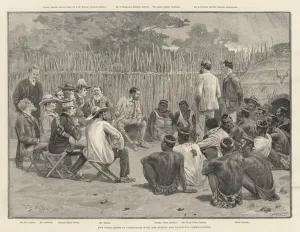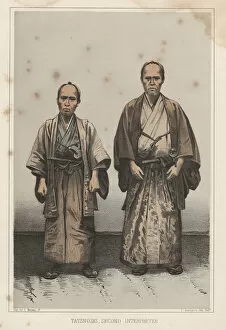Interpreters Collection
Interpreters have played a crucial role throughout history, bridging the gap between different languages and cultures
All Professionally Made to Order for Quick Shipping
Interpreters have played a crucial role throughout history, bridging the gap between different languages and cultures. From political negotiations to everyday conversations, their skills have been invaluable in facilitating communication. In one iconic image, we see Mao Zedong, the Chinese Communist leader, engaged in deep conversation with visitors. The interpreter beside him ensures that his words are accurately translated, conveying his message effectively. Another historical lithograph depicts Court Interpreter Shin in 1855. Dressed in traditional attire, he stands as a symbol of cultural exchange during an era of great transformation. The Swazi Queen is captured conferring with British and Transvaal Commissioners in an engraving. Here, interpreters act as intermediaries between two worlds - enabling diplomacy and understanding to prevail. Tatsnoski appears next - a second interpreter depicted through vibrant colors on a lithograph from the same year. This artwork showcases the diversity of language professionals who dedicate themselves to breaking down barriers. Even religious figures like Theodore of Mopsuestia recognized the importance of interpretation. His teachings were spread far and wide thanks to skilled translators who ensured his words reached diverse audiences. Moving forward in time, we encounter "The Interpreter Waved at the Youth, " an oil painting from around 1900 that captures a moment where language transcends generations – reminding us how interpreters foster intergenerational connections. A black-and-white photograph reveals The British Legation at Peking destroyed by Chinese guns - a stark reminder that even amidst conflict and destruction, interpreters continue their vital work behind closed doors. Chief Interpreter Mryamo Yenoski and Tako-Juro appear together on another colorful lithograph from 1855 – exemplifying teamwork among interpreters as they navigate complex dialogues across cultures. In contrast to these historic depictions are three modern-day interpreters working side by side – representing the ever-evolving nature of this profession which remains essential for global communication today. Beyond political and diplomatic settings, it also find their place in commercial exchanges.










